When I first stumbled across a group of young people dressed in intricately layered garments with utility buckles and waterproof fabrics in the heart of Bangalore, I knew I was witnessing something special. Despite the tropical climate, these fashion enthusiasts had embraced techwear—a futuristic style movement emphasizing functionality alongside aesthetics. This encounter sparked my fascination with India’s underground fashion subcultures. These worlds exist beyond mainstream trends but speak volumes about cultural shifts and individual expression.
Over the past few years, I’ve immersed myself in these vibrant communities, connecting with the innovators pushing boundaries and redefining what Indian fashion can be. In this deep dive, I’m sharing my discoveries about the most fascinating underground fashion subcultures emerging across India today.
The Rise of Niche Fashion Communities in India
Traditional Indian fashion has always been diverse, with regional variations in everything from sarees to jewelry. However, today’s young Indians are creating entirely new aesthetic movements, often inspired by global subcultures but infused with distinctly Indian elements.
These emerging communities aren’t just about clothing—they represent lifestyle philosophies, political statements, and artistic expressions. What makes them particularly fascinating is how they adapt international aesthetics to local contexts, creating something entirely unique.
The internet has accelerated this evolution, with platforms like Instagram, Discord, and Reddit allowing like-minded fashion enthusiasts to find each other across geographical boundaries. Many of these movements began with just a handful of pioneers but have grown into thriving communities with their own codes, events, and influencers.
Techwear: Functionality Meets Futurism in Indian Cities
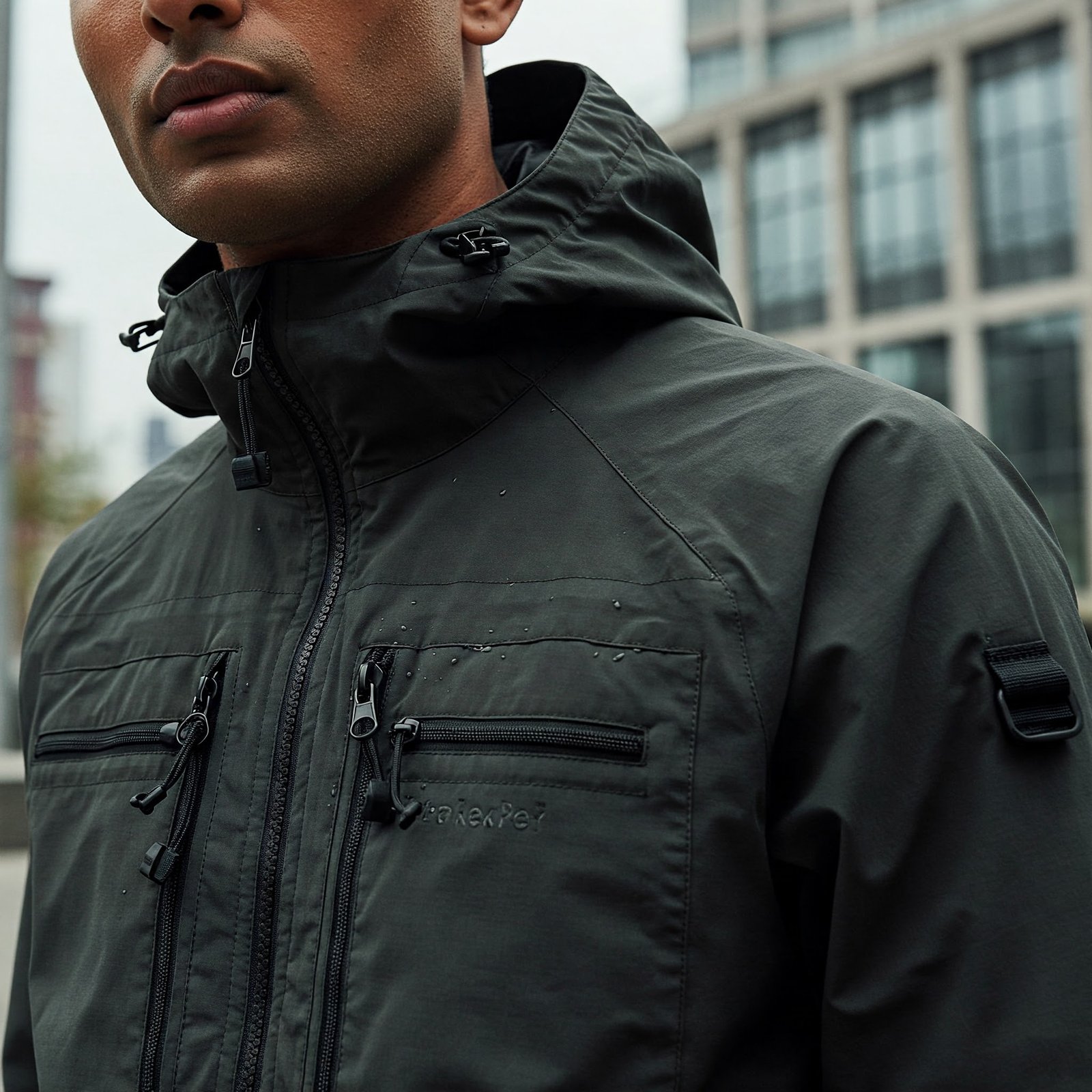
When I first encountered techwear enthusiasts in India, I was skeptical about its relevance to our climate. But speaking with Arjun, a 25-year-old software engineer and techwear devotee in Bangalore, changed my perspective.
“People assume techwear is just about looking like you’re from Blade Runner,” he told me during our meetup at a local streetwear store. “But it’s about adaptability and function. I’ve modified traditional techwear concepts for Indian weather—lightweight, breathable fabrics with the same utility features and aesthetic.”
The Indian tech wear community has developed its own innovations:
- Breathable tech fabrics adapted for tropical climates
- Integration of traditional Indian garment constructions with modern technical features
- Urban-focused designs addressing specific challenges of Indian city life
What strikes me most about Indian techwear is how it reflects the country’s rapid technological advancement. In cities becoming global tech hubs, this fashion movement visualizes the intersection of tradition and futurism that many young Indians navigate daily.
Check out this lightweight tech wear jacket on Amazon.
Neo-Traditional: Reclaiming Heritage Through Contemporary Lens
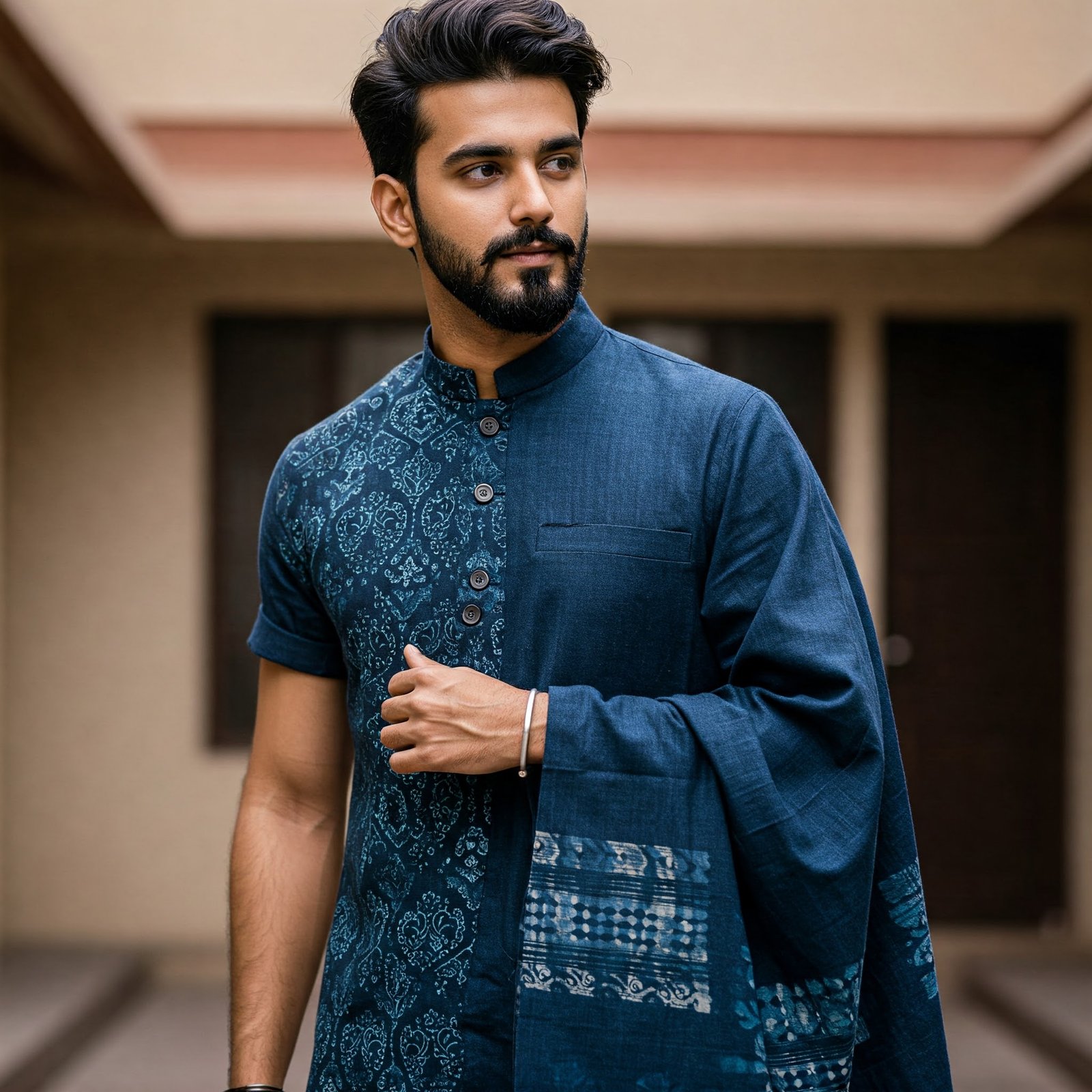
Perhaps the most intellectually stimulating subculture I’ve explored is what insiders call “Neo-Traditional”—a movement reclaiming and reimagining elements of India’s vast textile heritage through contemporary silhouettes and styling.
During my research, I spent a day with Meera, a textile designer whose work epitomizes this approach. In her studio filled with block prints, handloom fabrics, and modern sewing equipment, she explained, “We’re not interested in costume or pure tradition. We’re having a conversation between past and present, creating something that honors heritage while speaking to contemporary life.”
Key elements of Neo-Traditional include:
- Traditional textiles like ikat, bandhani, or jamdani reimagined in modern silhouettes
- Ancient techniques applied to unexpected garment types
- Sustainable practices drawing from traditional knowledge
- Rejection of the “fusion” label in favor of authentic cultural exploration
What fascinates me about Neo-Traditional is how it rejects both blind traditionalism and uncritical Westernization, creating instead a thoughtful synthesis that acknowledges fashion’s cultural significance.
This handcrafted Neo-Traditional scarf on Amazon beautifully illustrates the movement’s aesthetic.
Indian Vaporwave: Nostalgic Futurism with South Asian Flair
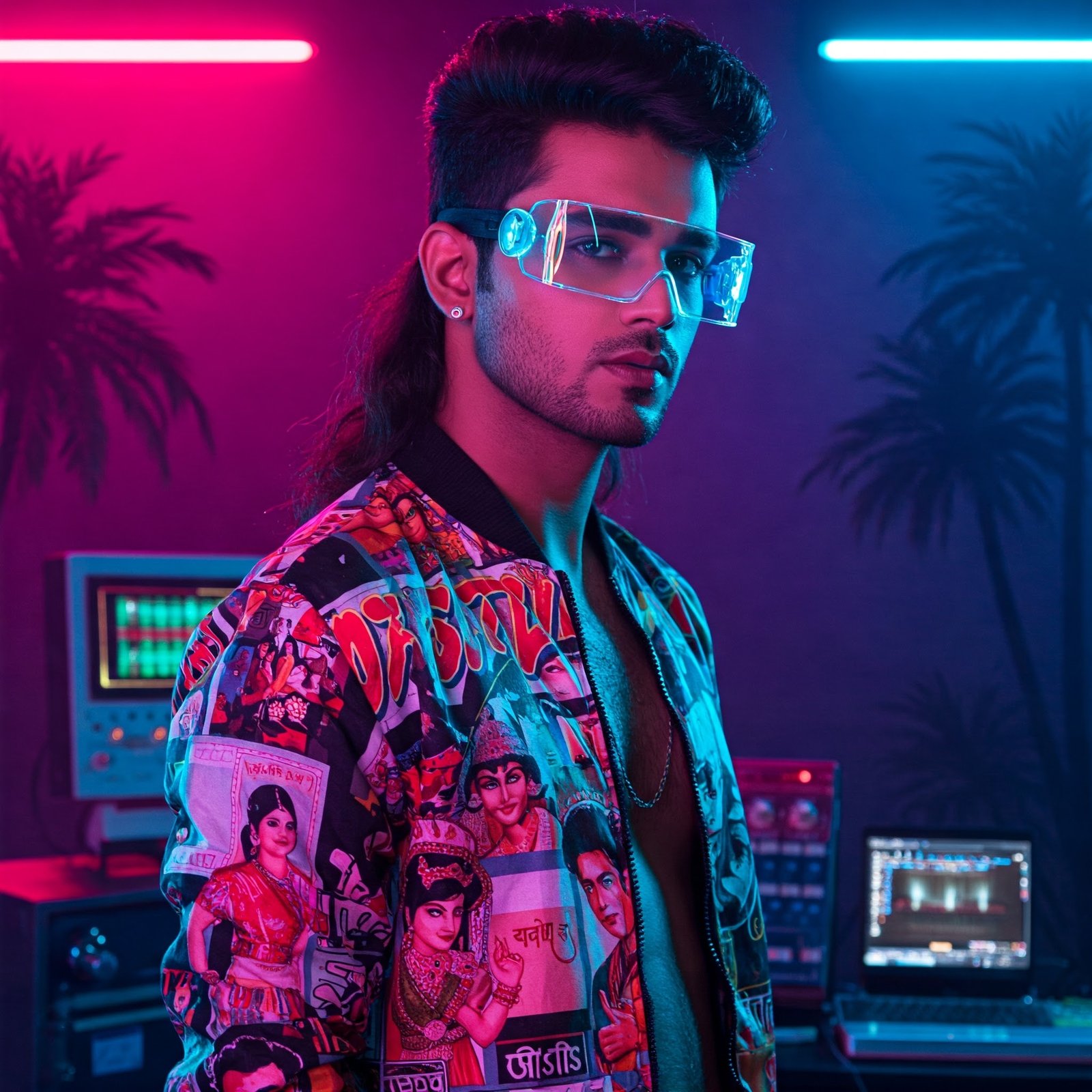
One of the most visually striking subcultures I’ve encountered is Indian Vaporwave—a psychedelic aesthetic combining 80s and 90s nostalgia with futuristic elements and distinctly Indian visual references.
When I attended a Vaporwave-themed event in Mumbai, I was transported into a world where vintage Bollywood meets cyberpunk. DJ Anika, one of the scene’s pioneers, explained to me between sets: “Indian Vaporwave is about creating an alternative timeline where our past cultural moments evolve differently. We’re remixing memories and creating our own retrofuturistic vision.”
The aesthetic encompasses:
- Bold colors reminiscent of vintage Indian advertisements and film posters
- Retro technology integrated with traditional Indian symbols
- Hindi/English typographic experiments
- Sampling and remixing of classic Bollywood and Indian pop culture
The movement extends beyond fashion into music, graphic design, and digital art, creating a complete sensory experience that questions linear narratives of progress and tradition.
This Vaporwave-inspired graphic tee on Amazon captures the aesthetic’s vibrant spirit.
Sustainable Maximalism: Ethical Excess in Response to Fast Fashion
In direct opposition to minimalist trends, I’ve watched the rise of what practitioners call “Sustainable Maximalism”—a movement celebrating abundance, color, and ornamentation while maintaining strict ethical standards.
Priya, a fashion design student I interviewed in Delhi, layers vintage kaftans with hand-embroidered jackets, upcycled accessories, and bold jewelry. “Maximalism isn’t about consumption,” she emphasized during our conversation. “It’s about cherishing what exists, celebrating craftsmanship, and rejecting the idea that ethical fashion must be aesthetically minimal.”
This community advocates:
- Creative reuse and upcycling of existing garments
- Support for traditional artisans and handcrafting techniques
- Emotional durability—creating pieces with personal significance
- Visible mending and repair as decorative elements
What I find most compelling about Sustainable Maximalism is its rejection of sustainability as aesthetic austerity, proposing instead that ethical fashion can be joyful, personal, and visually complex.
This upcycled patchwork jacket on Amazon represents the movement’s creative approach to sustainability.
Cottagecore with an Indian Twist: Rural Romanticism Reimagined
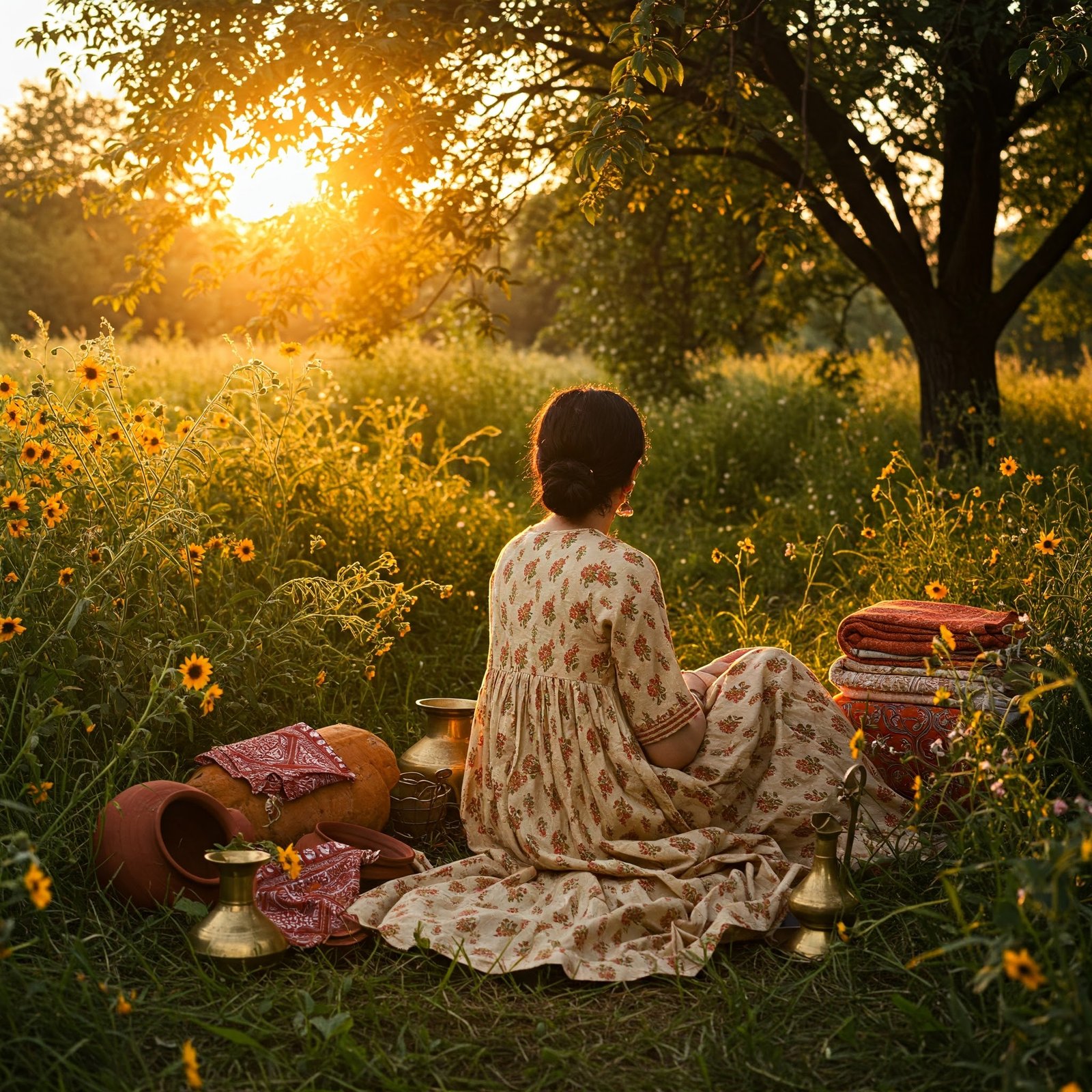
While Cottagecore has gained popularity globally, its Indian interpretation offers a fascinating cultural translation. Rather than drawing from European pastoral traditions, Indian Cottagecore romanticizes South Asian rural aesthetics and agricultural traditions specifically.
My exploration of this subculture led me to a small community in Pondicherry, where enthusiasts gather monthly for crafting and clothing exchanges. Kavita, one of the group’s founders, showed me her collection of hand-dyed natural fabrics and village-inspired designs.
“Indian Cottagecore isn’t about appropriating Western aesthetic and adding turmeric,” she explained while serving chai in handmade pottery. “It’s about reconnecting with our own rural heritage, agricultural traditions, and village craft systems that are rapidly disappearing.”
This movement encompasses:
- Natural dyes from Indigenous plants and traditional dyeing methods
- Handloom fabrics with regional weaving techniques
- Silhouettes inspired by practical rural garments
- Integration of traditional domestic crafts like embroidery and block printing
The political dimensions of Indian Cottagecore are particularly interesting—practitioners often advocate for agricultural reform, craft preservation, and rural development alongside their aesthetic choices.
Y2K Revival: Nostalgic Reinterpretation with Indian Elements
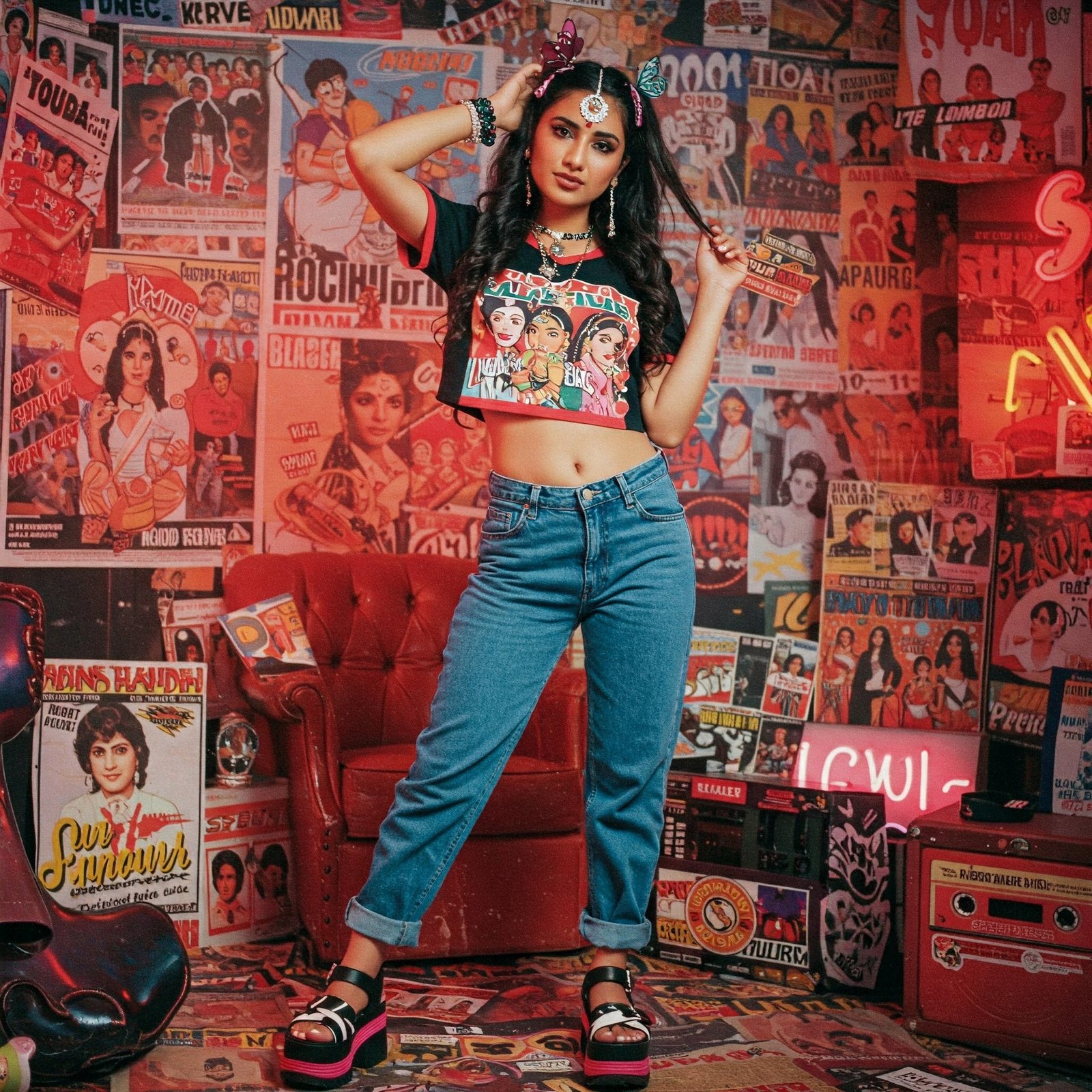
Perhaps the most accessible subculture I’ve documented is the distinctly Indian take on Y2K revival fashion. While drawing from the same early-2000s reference points as global trends, Indian Y2K enthusiasts incorporate specific cultural touchstones from their own millennial childhoods.
At a Y2K-themed pop-up shop in Hyderabad, I met Riya, whose outfit combined a cropped Bollywood graphic tee with low-rise jeans and chunky platform sandals. “I grew up watching both MTV and Hindi music videos,” she told me. “My Y2K style mixes both influences—it’s not about copying American fashion from that era but remembering how we actually dressed and the media we consumed.”
This movement features:
- References to early 2000s Bollywood and Indian television
- Vintage Indian brand logos and advertisements
- Fusion of Western Y2K silhouettes with Indian color palettes and details
- Nostalgic accessories reflecting specifically Indian consumer culture from that period
The Indian Y2K revival speaks to a generation navigating global influences while maintaining cultural distinctiveness—creating fashion that acknowledges multiple influences without prioritizing Western references.
Digital Tribal: Virtual Identity Expressed Through Physical Fashion
The newest and most conceptually challenging subculture I’ve encountered is what participants call “Digital Tribal”—a fashion that expresses online community membership and digital identity in physical space.
My introduction to this world came through Vikram, a gaming enthusiast and fashion designer whose clothing incorporates QR codes, augmented reality triggers, and references to specific online communities. When scanned with a smartphone, his garments reveal hidden content, from animation to music to access codes for private Discord servers.
“Our generation exists in multiple spaces simultaneously,” he explained during our video interview (his preference over meeting in person). “My clothes reflect that reality—they’re not complete without their digital components.”
Elements of Digital Tribal fashion include:
- Technological integration through smart textiles, QR embroidery, or AR markers
- Visual references to specific online communities, from gaming to crypto to digital art
- Physical adaptations of digital aesthetics like glitch art, 3D rendering, or interface design
- Clothing that functions differently when photographed or viewed through screens
This movement blurs boundaries between physical and digital expression, questioning what fashion means in an increasingly virtual world.
How to Discover and Connect with These Communities
My journey into these subcultures has taught me that finding authentic niche communities requires genuine curiosity and respect. If you’re interested in exploring these movements, I recommend:

| Approach | Where to Look | Key Search Terms | Pro Tips |
|---|---|---|---|
| Digital Discovery | #IndianTechwear #NeoTraditionalFashion | Follow 2nd-degree connections of found accounts | |
| r/IndianStreetwear r/SustainableFashionIndia | Sort by “Top – All Time” for quality content | ||
| Discord | Server invite links in Twitter/Reddit bios | Lurk before participating to learn norms | |
| Physical Spaces | Independent boutiques | Ask about “community meetups” | Staff often know local scene leaders |
| Art galleries | Digital art/photography exhibitions | Check visitor books for IG handles | |
| University events | Fashion department noticeboards | Students often run underground zines | |
| Craft workshops | Natural dyeing, block printing sessions | Arrive early to chat with participants | |
| Key Creators | Techwear | @urbanutility.india @techwear.India | Look for “fit breakdown” posts |
| Neo-Traditional | @kala_haat @tantifabrics | Follow craftsperson collaborations | |
| Indian Vaporwave | @vapor.mumbai @retrobollywoodwave | Check tagged locations in posts | |
| Sustainable Maximalism | @thriftedtemple @patchworkpaharganj | Watch for pop-up announcements |
My Personal Journey Through These Subcultures
My exploration of these communities has transformed not just my understanding of fashion but my own personal style. I began as an observer, documenting these movements out of journalistic curiosity. However, I found myself increasingly drawn to their philosophies and aesthetics.
My wardrobe now includes pieces from several of these movements—a hand-blocked shirt that honors textile traditions while fitting my contemporary life, technical fabric pants that perform beautifully in monsoon conditions, and accessories created by artisans I’ve personally connected with through these communities.
What I value most about these experiences is how they’ve challenged my assumptions about what Indian fashion can be. Each subculture offers a different answer to the question of cultural identity in a globalized world, proving that authenticity can take countless forms.
The Future of Underground Fashion in India
As I continue to document these movements, I’m watching several emerging trends that may shape the future landscape:
- Increasing dialogue between subcultures, with creators drawing from multiple niche aesthetics
- Greater international recognition, with Indian interpretations influencing global fashion conversations
- Commercial adaptation as mainstream brands attempt to capture elements of these movements
- Technological integration is accelerating with advances in smart textiles and digital fashion
What excites me most is how these communities are creating fashion that responds to specifically Indian realities while participating in global conversations. They’re not simply importing aesthetics but transforming them, creating something genuinely new in the process.
Final Thoughts: Why Underground Fashion Matters
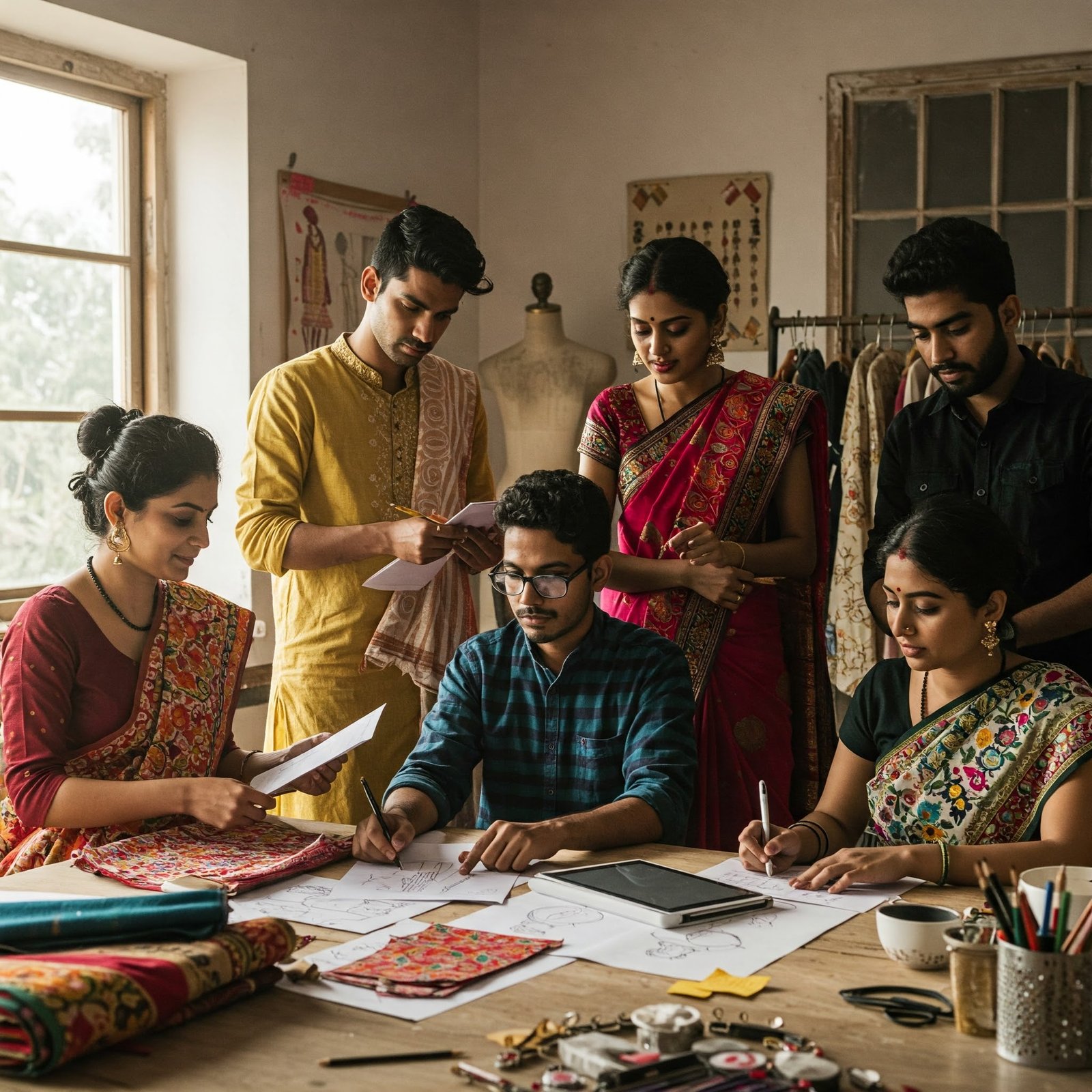
In a country with one of the world’s richest textile and clothing traditions, these emerging subcultures might seem insignificant compared to the vast heritage they draw from. However, I’ve come to see them as vital to the evolution of Indian fashion identity—spaces where young people actively negotiate between tradition and innovation, global and local, digital and physical.
Through my conversations with designers, enthusiasts, and thinkers in these spaces, I’ve witnessed fashion functioning as a language for exploring complex questions of identity and belonging. Far from frivolous, these movements represent serious cultural work happening at the margins of mainstream visibility.
The next time you spot someone in an outfit that seems to defy conventional categories—perhaps combining traditional textiles with futuristic shapes or displaying digital elements on physical garments—know that you’re likely witnessing one facet of India’s vibrant underground fashion ecosystem. These pioneers are writing the next chapter of Indian style, one experimental outfit at a time.
FAQs
How can I participate in these fashion subcultures without appropriating them?
Approach with genuine curiosity and respect. I recommend starting by learning about the philosophy and context behind the aesthetic that interests you. Most communities welcome new participants who engage sincerely—attend events, join online discussions, and support independent designers before jumping into wearing the style.
Are these fashion subcultures affordable or accessible to average fashion enthusiasts?
Accessibility varies significantly between movements. Some, like Indian Vaporwave or Y2K Revival, can be quite accessible through thrifting or DIY approaches. Others, particularly those emphasizing handcraft or technical materials, may require investment. Many communities gradually share resources for building wardrobes or through secondhand purchases.
Do I need to commit fully to one aesthetic, or can I mix elements?
Most participants I've interviewed mix elements from different subcultures or incorporate pieces into otherwise conventional wardrobes. While some purists exist, the overall spirit is experimental rather than dogmatic. I personally incorporate elements from multiple movements depending on context and mood.


